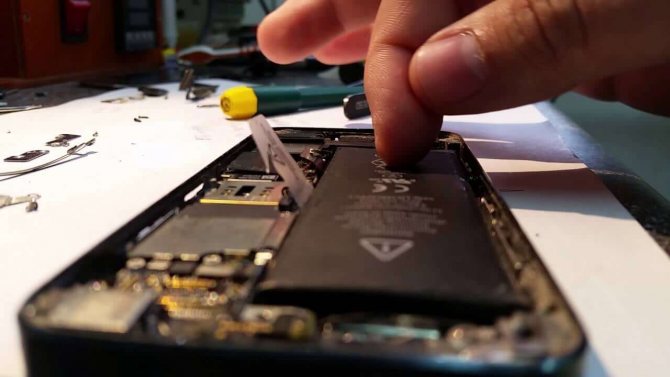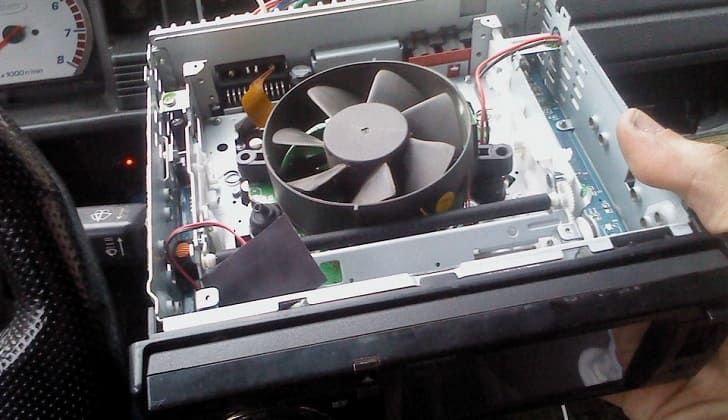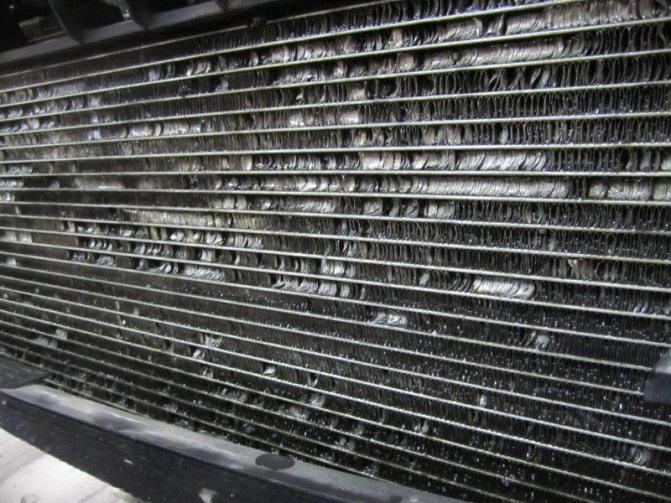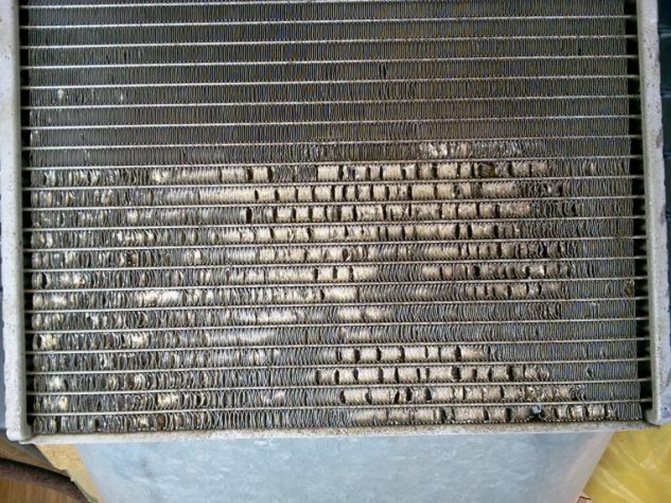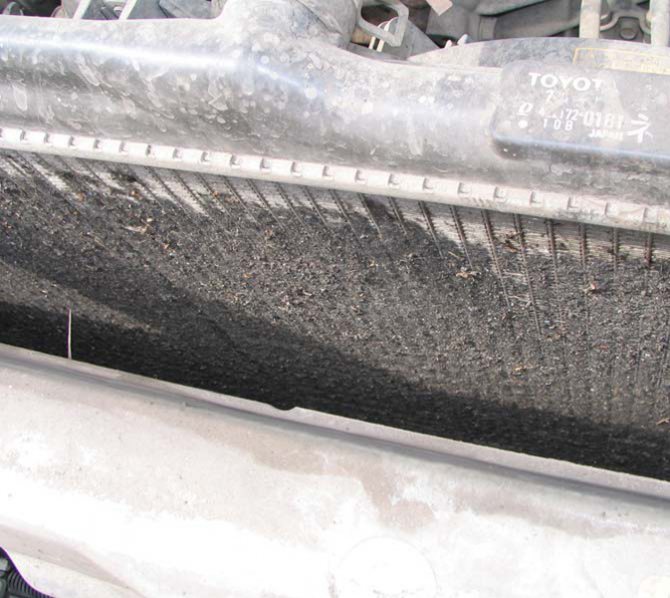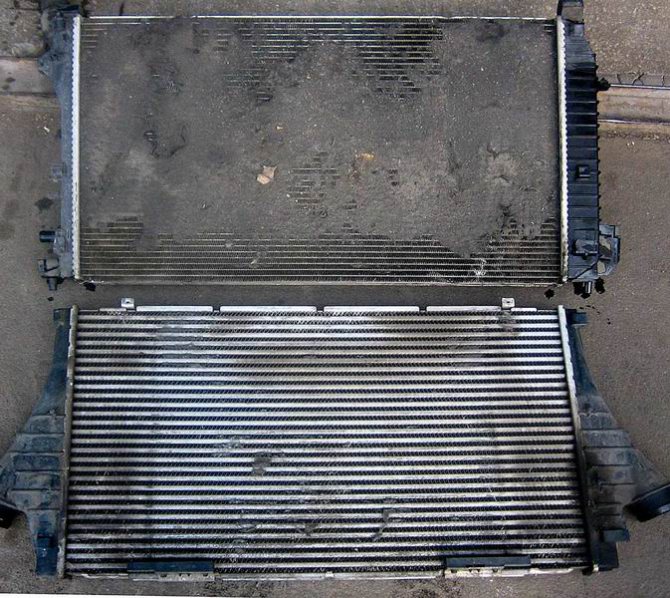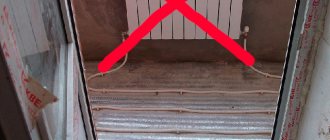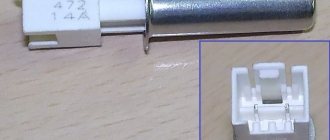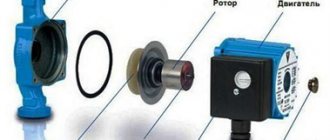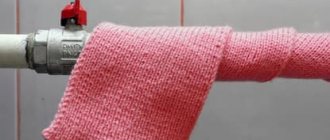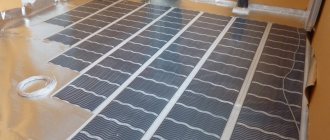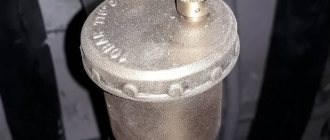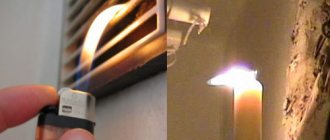Why is the radiator cold and the engine hot?
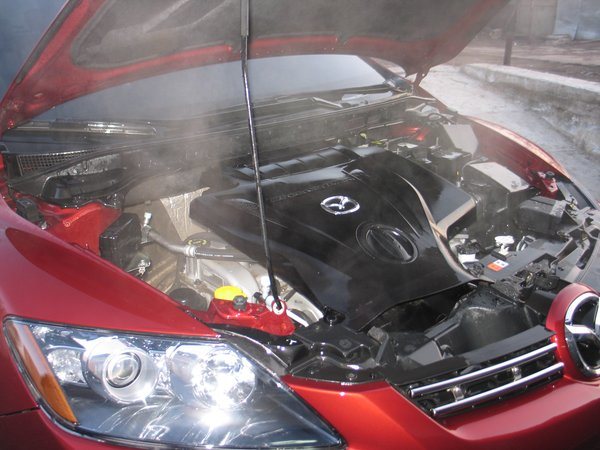
The problem of engine overheating is well known to the vast majority of drivers. In this case, overheating of the engine can lead to serious damage or complete failure of the internal combustion engine. To prevent this from happening, the engine cooling system needs periodic maintenance and constant performance monitoring.
In this case, a number of malfunctions can still occur unexpectedly. This means that it is very important to know why the engine heats up in certain cases. In this article, we will talk about common causes of overheating, what to do if the engine is boiling, but the radiator is cold, etc.
Read in this article
The motherboard is heating, what should I do?
- It is necessary to open the system unit and remove all dust from it. For this, you can use a conventional vacuum cleaner. However, it is worth taking a closer look at how the loops and wires are laid in the system unit, since it is important that they do not interfere with the ventilation process.
- It is worth inspecting the location of the computer in the room, so that it is not near the battery and that its fans have a supply of normal air at room temperature.
- If there is no internal radiator in the case of the system unit, you need to purchase it and turn on or replace the faulty one.
- If the 'northbridge' or 'southbridge' radiator overheats, new and improved heatsinks and thermal grease must be purchased and replaced.
- It is worth inspecting the processor cooler and if the BIOS or test programs show a high temperature on it, then also replace it by purchasing a new cooler and thermal paste. At the same time, if the case of the system unit allows it, then it is better to purchase a radiator with a large size, which can remove more heat from the processor.
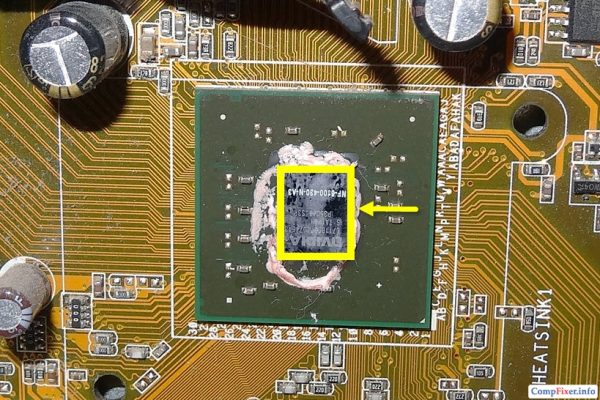

However, this has exhausted the standard possibilities to reduce the temperature in the computer case and lower the temperature of the motherboard. And if none of these methods helps, then it is necessary to resolve the issue of replacing the computer or its system platform, since the problem is more likely in the programs or games that you began to get involved in.
At the same time, there is still a lot of incomprehensible and unknown in the world, and computers are high-tech devices, the work of which is often beyond our understanding. Therefore, try to use them for their intended purpose, be careful and do not get carried away with modern games that use a lot of system resources, and, of course, your time.
Engine overheating: main symptoms and causes
Let's start with the signs. First of all, this is the engine temperature gauge on the dashboard in the red zone. Also, on some models, a warning light may simply light up, indicating overheating.
Another sign of engine overheating is a decrease in engine power, loss of traction and knocking knocks when you press the gas pedal sharply or just when accelerating. The reason is that the process of fuel combustion in the cylinders is disrupted from the temperature increase (explosions of the working mixture instead of combustion).
However, if the heating of the motor is above 105 degrees, then this is already overheating and you need to look for reasons. The simplest and most understandable is the low level of coolant in the cooling system. We also add that the liquid in the engine boils at a low level, since the contact surface of the liquid and the heated motor is insufficient, that is, heat dissipation is impaired.
- It should also be borne in mind that the cooling system is not completely sealed and closed. During operation, the liquid evaporates, which causes a decrease in the level.
Often the radiator, pipes and connections begin to leak.Still, internal leaks should not be ruled out, when through cracks in the BC or cylinder head, as well as through a punched gasket, coolant goes into the cylinders.
- It is also important to check the condition of the radiator. Radiator honeycombs are small, the outside of the radiator is often dirty. Also, the circulation of coolant inside the radiator may be disturbed due to the accumulation of deposits. In this case, when the engine cooling fan turns on, a cold engine radiator may indicate fluid circulation problems.
- In many cases, the electric radiator fan is triggered by a sensor signal. If the sensor does not give a signal, the fan will not work or it may work with insufficient performance.
- Air locks may well form in the cooling system. It is noteworthy that the temperature sensor may not show overheating. In any case, the airlock must be “driven out” to exclude the presence of air.
- Another reason why the engine is boiling, the radiator is cold and the cooling fan is constantly running is the thermostat. In a nutshell, a thermostat is a valve that divides the cooling system into two circuits through which coolant circulates. A small circle allows circulation only through the cooling jacket for quick warm-up, while a large one allows fluid to pass through the radiator for improved cooling.
- Completing the list of major breakdowns is a pump (water pump of the cooling system). The specified pump forcibly pumps coolant through the system in order to achieve better circulation.
As a rule, the pump either starts to leak, or its impeller wears out. Less commonly, the pump is seized. In the case of a cold radiator, provided there is no pump leakage, it is appropriate to talk about impeller wear. In simple words, the pump does not pump fluid well, the coolant in the engine (small circle) heats up much faster than in the radiator itself. It turns out that the heating is uneven, the radiator is cold, and the engine is boiling. Let us remind you again that similar symptoms occur in the case of air congestion.
What Happens When iPhone Overheats
When the iPhone overheats, it will begin to programmatically protect its components from damage and go into cooling mode. This means the following:
- Charging (including wireless charging) slows down or stops significantly.
- The display dims or turns black.
- The transmit and receive modules of the cellular radio signal will go into a low power state, the signal of the cellular network may weaken.
- The camera flash will be temporarily disabled.
- Smartphone performance drops noticeably, especially when running resource-intensive applications.
Switching to cooling mode is a normal situation provided by Apple to prevent the smartphone from breaking if it overheats. Apart from the inconveniences described above, problems usually do not arise.
To prevent the phone from turning off, stop using it as soon as possible and move it to a cool environment, allow it to cool down.
If the cooling mode does not help, the warning message "Temperature before using iPhone needs cooling" will appear on the screen. It is usually displayed on a black background like the image below.
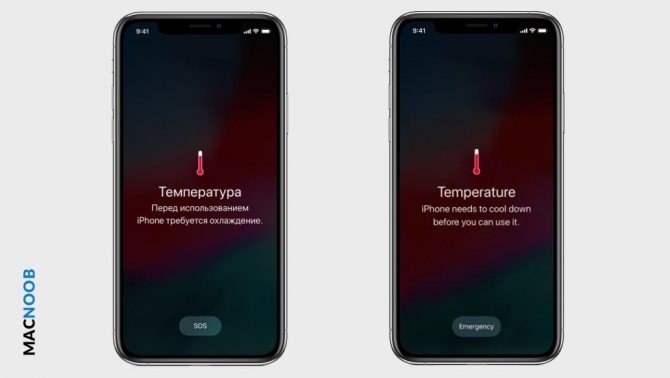

In English it looks like “iPhone needs to cool down before you can use it”.
Overheating while using the navigation will display a warning with the words "iPhone temperature needs cooling" and the display will be turned off. In this case, the application will provide directions for the route, and when approaching a turn, the display will turn on, show the turn and turn off again.
When this message appears, only calls to emergency numbers will be available. To bring your phone back to life, let it cool down: turn it off and move it to a cool place for a few minutes.
Can iPhone explode if overheated? This is highly unlikely. In practice, several cases are known when iPhones overheated to catastrophic levels and caught fire.But all these situations were the result of battery malfunction.
What to do if the engine overheats
First of all, it should be remembered that if the overheating is short-term (for example, the temperature arrow rises in a traffic jam), then you should observe whether the temperature will drop after the start of the movement (counter-air blowing appears) or as a result of turning on the radiator fan.
If the car was already in motion and the engine temperature reached a critical level, you should not turn off the engine immediately. Also, do not try to cool the engine by pouring water on it from the outside, pouring cold water into the radiator, etc. Such actions will lead to the need to repair the internal combustion engine, and it may be necessary to change the BC and cylinder head.
Next, you need to wait a few minutes, while examining whether there are obvious and strong signs of antifreeze / antifreeze leakage under the car or in the engine compartment. If no leaks are visible, but the temperature does not drop either, the unit must be damped.
Please note that you need to turn off the engine immediately when steam has gone out from under the hood, traces of intense coolant leakage are clearly visible. In this case, the motor must be stopped, without expecting that turning on the stove will lower the heating.
Let's summarize
As you can see, there are a lot of reasons for engine overheating, and the very excess of the operating temperature has a very detrimental effect on the state of the internal combustion engine. In this case, it so happens that the cooling system is clean, the level of antifreeze is normal, the fan, pump and thermostat are working normally, but the motor still overheats. In this case, UOZ may be the culprit, since the process of fuel combustion when the ignition angle is knocked down is disrupted.
In some cases, the cause of overheating is the general wear of the motor and its CPG. Simply put, the piston rings wear out, and insufficient sealing of the combustion chamber leads not only to disruptions in the combustion process of the fuel charge, but also to the breakthrough of hot gases. In this situation, the motor power drops and overheating may occur.
Also, prolonged and heavy load on the engine sometimes leads to overheating. For example, wedged brake pads can impede rolling, as a result of which the driver actively loads the motor. If you add to this the car air conditioner turned on in the heat, the engine will be even more loaded.
How to understand that the engine has started to overheat: obvious and hidden signs of engine overheating. Common causes of overheating.
The engine temperature arrow jumps or jumps randomly: the main causes of this malfunction. Diagnosing problems with your own hands, recommendations.
Why does the engine overheat occur? What to expect for the driver and what damage can occur if the engine is overheated. What to do if the internal combustion engine overheats.
What is the temperature of the coolant (antifreeze, antifreeze) is normal on a warm engine. What affects the boiling point and other properties of the coolant.
The engine temperature does not rise, the ICE temperature arrow drops on the fly. Why does the temperature drop after turning on the stove. Diagnostics and repair, advice.
The engine does not reach operating temperature, the motor temperature arrow does not rise during warming up or falls during driving: the causes of the malfunction.
Why does the radiator stay cold when the engine is hot and how to fix it
Almost every motorist at least once in his driving life has come across such a phenomenon as engine overheating. For some, this is a rarity, while for others it is a daily routine.
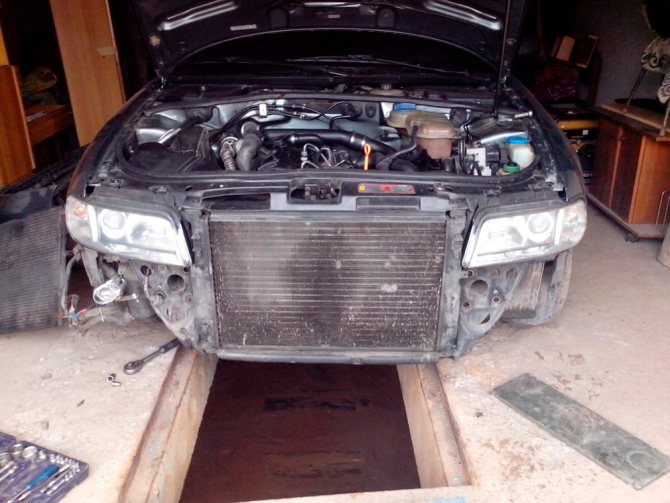

Overheating should not be underestimated, since it can lead to rather serious negative consequences, which will manifest itself in the form of costly breakdowns.And sometimes the situation is completely critical when the engine fails, major repairs are required, or a complete replacement of the power unit.
In order to prevent such a development of the scenario, you should periodically check the state of the cooling system, monitor its performance and promptly perform all actions aimed at eliminating malfunctions.
But some problems appear unexpectedly, and sometimes it is difficult to prevent or foresee them. Therefore, motorists and even experienced car owners need to understand why the radiator remains cold, and the car heats up, that is, the internal combustion engine temperature rises.
Clogged cooling system
The most common cause of high temperatures in a laptop is cooling problems. In rare cases, they are caused by mechanical damage, but usually due to simple contamination with dust and small particles. Manufacturers recommend regular cleaning of internal components in specialized service centers.
If the warranty period has already expired, you can clean the laptop yourself, saving on payment for the services of the wizard. For almost every model, you can find step-by-step instructions for disassembly and reassembly. Most often, screws on laptop computers have a regular cross-section. To unscrew them, special nozzles are not required, a regular screwdriver will be enough.
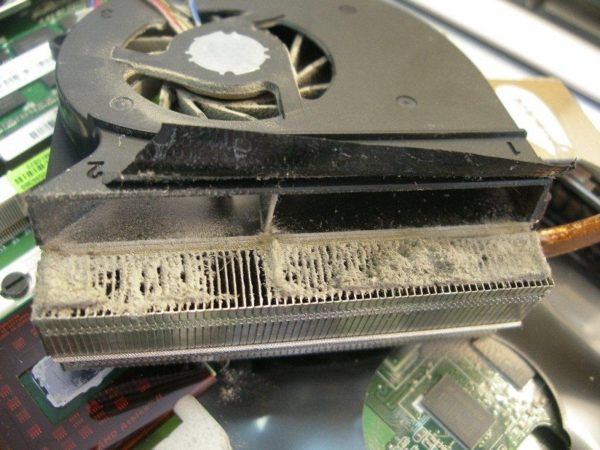

Note! Coolers and radiators are the places where dust accumulates most. Also, don't forget to clean your keyboard.
In general, the sequence of actions during disassembly is as follows:
- Turn off your laptop.
- Disconnect all cables and peripherals.
- Detach the battery using the catches on the case.
- Unscrew the screws on the bottom panel, remove the compartment covers.
- Remove the main cooling fan.
For beginners, you can limit yourself to only these actions, without making a complete disassembly. After completing them, you will have access to the main electronic components and elements of the cooling system. Use a brush with a light, coarse bristle to remove dust. A vacuum cleaner or a can of compressed air will help to blow dirt out of hard-to-reach corners.
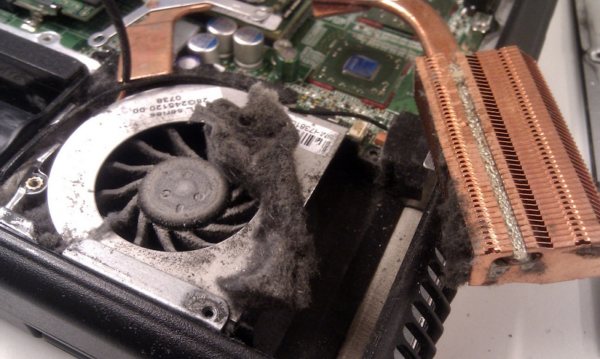

Important! Clean the interior with dry tools only. Moisture can cause oxidation of contacts or short circuits.
Symptoms and Causes
To understand the question of why the radiator remains cold, and the engine is hot at the same time, one should study the signs and directly the reasons for such a situation.
The main symptom is a rise in temperature on the gauge, which is located directly on the dashboard of your car. The arrow goes beyond the white zone and turns into the red one. On other machines, slightly different controllers are used, therefore, a warning light on the instrument panel may simply light up, indicating an excessively high temperature, perceived as overheating.
Other signs are a drop in engine power, loss of traction, and knocking knocks when the driver abruptly presses the accelerator pedal and accelerates. The reason for the detonation is that the increased temperature has led to a change in the combustion process of the air-fuel mixture inside the working cylinders. Instead of burning the mixture, it starts to explode. The combustion process is replaced by explosions.
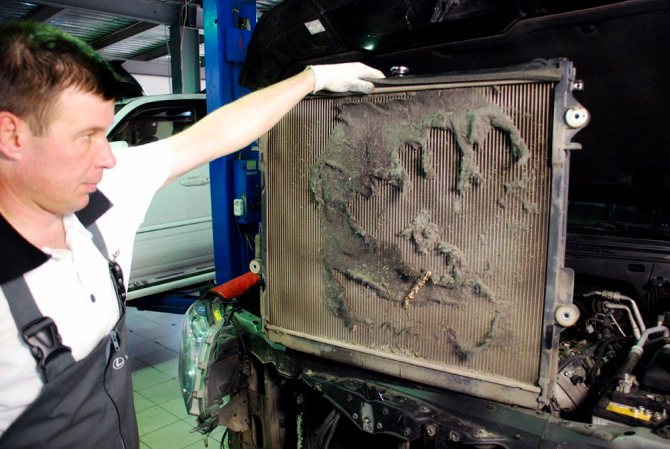

Do not forget about the existing engine temperature standards. In normal working condition, the motor warms up to 85-95 degrees Celsius. This is not considered overheating, but is positioned as the optimal operating mode of the internal combustion engine. Situations are allowed when temperature indicators increase to 100-105 degrees Celsius. Especially in situations where we are talking about a short-term promotion. This is a common situation in the summer, when a prolonged downtime in a cork contributes to heating slightly higher than the intended performance.
In fact, heating up to 105 degrees Celsius can be taken as normal. But if the temperature rises, overcoming the maximum permissible limits, here we are talking about overheating. It is necessary to look for objective reasons why this is happening, as well as find a way out of this situation.
Experts identify several reasons why the engine overheats, and the radiator of the cooling system itself is cold:
- Lack of coolant in the system. The most commonplace reason that you should pay attention to in the first place. If there is not enough cooling liquid, it will boil earlier, which will provoke system malfunctions. The process of heat removal is disrupted;
- Violation of tightness. Do not forget that the cooling system is not airtight. Gradually, some of the coolant leaves and evaporates. Therefore, it is important to control its level and periodically add antifreeze;
- Leaks in the radiator, pipes and fittings;
- Internal leaks arising from cracks in the cylinder head or BC, as well as due to punched gaskets. As a result, antifreeze penetrates the cylinders;
- Radiator. He uses a small honeycomb that can easily get dirty. As a result, the normal circulation of the coolant is disrupted due to accumulated deposits. If the cooling fan turns on, but the radiator remains cold, the circulation of antifreeze is probably disturbed;
- Sensor. In many vehicles, the radiator fan is activated by a command from a monitoring sensor. If this sensor does not transmit a signal, the fan will not work, or it will not function efficiently enough;
- Air congestion. Another reason why the engine is almost boiling is that the radiator remains cold. In parallel with this, the temperature sensor does not always indicate that there is overheating in the system. Electronics does not notice how the internal combustion engine is boiling. It is required to get rid of the airlock;
- Thermostat. The engine may warm up, but the radiator is still cold at times due to the fact that the thermostat is out of order. This is a special valve that distributes the coolant flows in two circles. The small circle provides circulation inside the cooling jacket, which is required for quick warm-up. A large circle runs through the radiator to provide more efficient cooling. If the thermostat sticks, the antifreeze will only be able to pass in a small circle, that is, the radiator will remain cold and the engine will boil. As a result, the motor heats up, and our radiator is always cold. Here it is worth touching the lower pipes that go to the radiator. If they are cold and the engine overheats, the thermostat is probably the problem;
- Pump malfunction. The cooling system uses a pump, that is, a water pump that pumps antifreeze. This allows you to create a forced circulation system. Typically, the pump is leaking or the impeller elements are worn out. Jamming can sometimes occur. If the radiator is cold and the motor overheats, but there are no signs of leakage, then the reason lies in the worn impeller. That is, the pump does not pump antifreeze well, the liquid in the motor, moving in a small circle, heats up more intensely than in the radiator. As a result, it turns out that the heating is uneven, the engine is already boiling, and the radiator is still cold.
As you can clearly see, there are many reasons for this condition of the engine and radiator of the cooling system. And each of them can potentially lead to serious consequences.
Additional reasons
It is clearly seen that there are quite a number of reasons for overheating of the power plant on a car with an absolutely cold cooling radiator.
Regardless of the reasons, any excessive overheating of the motor when the temperature rises to critical levels is a harbinger of serious breakdowns and malfunctions. It is much easier and cheaper to prevent them than to eliminate them later.
It is also interesting that there are situations when there are no contaminants in the cooling system, antifreeze or antifreeze is at a sufficient level, the water pump, fan and thermostat are in good working order, work well. But with all this, the engine continues to overheat. If the situation develops in this way, it is strongly recommended to check the ignition timing. If it is knocked down, then the combustion process of the air-fuel mixture will be disrupted, the engine will start to overheat.
There is another option, when a strong overheating of the engine is due to operation on low-quality fuel or on fuel, the octane number of which does not correspond to the parameters set by the automaker. As a result, the temperature regime of the combustion process of the air-fuel mixture is violated.
There are rare cases that cannot be ruled out either. Here, overheating is associated with the general worn out state of the power unit, as well as with the wear of its cylinder-piston group. In such situations, it is possible that the motor will heat up above normal levels, but the radiator will remain cold. This is due to the wear of the piston rings, insufficient tightness of the combustion chamber. As a result, not only the process of fuel combustion is disrupted, but also hot gases break through through the seals. Here the power will instantly drop, overheating will begin.
Cooling system check
We start the engine and warm up to operating temperature, pay attention to how the upper pipe heats up, it should heat up gradually, about five times slower than the engine. This is due to the fact that there is a small hole in the thermostat; hot coolant is slowly discharged from it into a large circle.
If the car has just started to warm up, but the upper pipe began to warm up at the same speed as the engine, then touch the lower radiator hose... If the bottom pipe heats up in the same way, it means that the thermostat is stuck in the open position.
It needs to be replaced. In this position, jammed in the half-open position, the motor warms up twice as long. With the engine warm, about 50-70 degrees, the lower radiator pipe should remain cool. Now we are waiting for the engine to warm up to operating temperature. On vehicles with electric cooling fans, you will have to wait for the fan to start working. If the fan starts to work when the motor is boiling, then there is a defect in the expansion tank or the radiator cap, the fan sensor may also not work and the pump may not work well.
As soon as the engine warms up, the viscose clutch will start spinning at full load and the fan will turn on, then you will need to feel the upper pipe, or better - the brass bath of the radiator, it should be hot; then you need to touch the radiator bath or the lower pipe. The temperature amplitude at the inlet and outlet is approximately 20 degrees. In the event that the difference between the coolant radiator inlet and the outlet is more than 20 degrees, then, most likely, the pump does not pump, or the thermostat does not open completely.
Or maybe the radiator was clogged from the inside. If the lower branch pipe is hot (its temperature may be equal to the temperature of the upper one), then the cause is a blockage of the radiator from the outside.
Now, as the engine has warmed up completely, we turn it off and wait for about a minute. If the coolant boils, then we wait until it stops boiling, after about two minutes, carefully open the radiator cap. The coolant should be right under the cover.
If this is not the case, then, most likely, the valves in the radiator cap are not working correctly, and it cannot be ruled out that the cap is not damaged.
The engine itself can boil. After removing the cover, part of the coolant spilled out, it needs to be refilled, now we start the engine, the radiator cap should be open.The coolant in the neck of the cap will shake slightly. We increase the number of revolutions to 2000-2500 rpm.
The liquid level should drop - this indicates that there is no blockage in the radiator, while the pump creates a vacuum, as a result of which the antifreeze sucks in faster than it flows in. If there is a blockage in the radiator, and the pump is working properly, then the coolant will simply squeeze out through the throat.
But need to clarify: if the engine itself heats up, it boils only when it is started, then the engine leaks exhaust gases, and if the coolant boils for a few more minutes after the engine stops, then the engine is overheated. The reason for which is a clogged thermostat, a faulty pump, or a clogged radiator. Sometimes knocks out the head gasket.
From left to right: a punctured cylinder head gasket, a dirty thermostat, a pump breakdown.
This happens from constant fast driving, or due to "too" early ignition. If the gasket is knocked out, it means that steam will come out of the exhaust pipe, we press on the gas, look in the mirror, if fog is behind you, then there will be no doubt. Often, all expansion tanks are equipped with small nozzles installed in order to remove air from the cooling system.
To detect a breakthrough of exhaust gases into the cooling system, you will need to warm up the engine, and put a condom or a plastic bag on the neck of the radiator or expansion tank, then wait about ten minutes, do not forget to increase the speed from time to time. Then, after ten minutes, we take it off and sniff the fumes. If there is no smell of gasoline, then the problem is in a clogged radiator, thermostat or pump, and if there is a smell of gasoline, then the gasket is broken. This is not the end of our search for the cause of engine overheating.
Continuation (second part) read on.
Correct driver action
In situations where the engine overheats, but the radiator remains cold, it is important to take the right measures to prevent the situation from getting worse, as well as to try to prevent any serious malfunctions and costly breakdowns.
Sometimes it happens that the driver panics ahead of time. This usually happens among motorists who have only recently got behind the wheel, or have changed the car, not yet having time to get used to the peculiarities of its behavior and to the operating modes of the engine itself.
Here we are talking about short-term overheating, which can, to a certain extent, be considered the norm for many motors. Short-term overheating usually occurs during prolonged idle time in a traffic jam. Then the arrow of the temperature sensor, displayed on the dashboard, rises to the critical red zone. But as soon as the car starts to move, when there is airflow due to oncoming air flows, and the cooling fan is activated, the temperature returns to normal. That is, to begin with, try to observe and track whether the temperature will drop after the jump up, to the red zone.
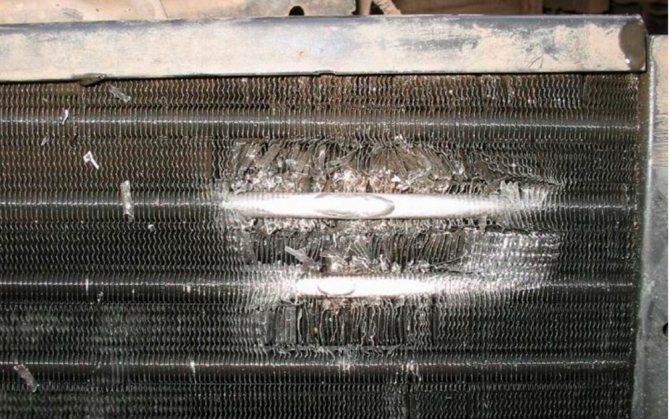

But do not wait and watch when the car was in motion, that is, there was blowing with oncoming air, or the fan was working. In such situations, experts give several useful recommendations:
- If the car was moving in completely normal conditions that do not provoke short-term overheating, but the temperature still starts to increase and reaches a critical level, do not turn off the engine immediately;
- Also, do not try to cool the power unit by pouring cold water on it outside, or by adding cold water to the expansion tank with cooling liquid;
- If you ignore these recommendations, fill the engine with water or add it to the reservoir, you will probably have to repair the engine. Moreover, such repairs are often accompanied by the mandatory replacement of the cylinder block and the head of the block;
- If you want to cool the engine, lower the engine temperature with a cold radiator to normal levels, it is better to leave the road, stop and turn on the stove in the car. It doesn't matter if it's spring or summer, the cabin is warm enough without a working heating;
- Turning on the stove will allow you to remove excess heat from the engine, transferring it to the interior of your car;
- In parallel, the engine itself must not be turned off. Just put the gearbox in neutral and leave the engine idling;
- Wait a few minutes after completing all the described steps;
- In parallel, check for signs of coolant leakage anywhere. To do this, you have to get out of the car, look under the car and into the engine compartment;
- If there are no leaks, then the manipulations carried out with the stove and the idle speed of the power unit did not allow the temperature to drop below the critical mark, turn off the engine.
Next, you will need to call a tow truck or ask someone to be towed to get to the garage or the nearest service center. There you will already find out the reasons, look for the culprit and carry out the appropriate repair and restoration work.
But there are situations when the engine needs to be turned off as soon as the engine temperature has reached its peak value. These are the cases when, while driving, you suddenly saw steam from under the engine compartment, and at the same time there are traces of coolant leakage. If you are faced with similar circumstances, stop and turn off the engine. There is no need to wait until the temperature starts to drop after turning on the stove. Otherwise, you risk completely ditching the engine.
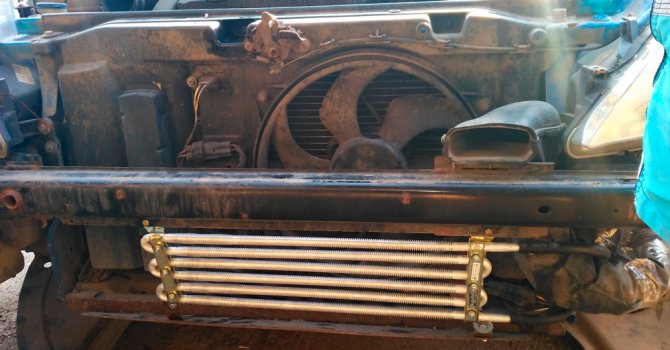

The engine needs proper operation. This is the basis for its safety, effective, safe and long-term work. Also, in parallel, always try to monitor the condition of the cooling system. Any traces of coolant leakage, a small coolant level in the expansion tank, an excessive rise in temperature under normal operating conditions should be a reason to check the condition of the entire system.
When faced with a situation where the power plant on your car is noticeably overheating, take appropriate action, find the cause of the rise in temperature and eliminate it. If difficulties arise with self-diagnosis, it is better to immediately seek help from qualified specialists.
Pay attention additionally
Consider a few more options for why the radio tape recorder is warming up:
- improper connection of wires leads to an increase in temperature;
- devices in narrow dashboards of cars get very hot, installation can be done in such a way as to free up space;
- the heating temperature rises for those car radios, the interior of which is covered with dust. It must be removed by opening the case and cleaning.
If you cannot find the cause, contact a specialist who will consistently carry out preventive repairs and establish the cause specifically in your case. Craftsmen usually know what features are inherent in Chinese technique. Where exactly to look for the problem when using devices from different manufacturers. For example, the sound disappears if there are various thermostats on the board that turn off the components of the microcircuit.
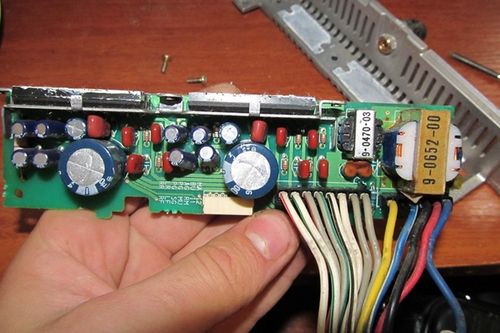

Amplifiers for car radio
In general it depends:
- from the peculiarities of production (technology used by the manufacturer);
- operating time (whether cleaning is necessary);
- release dates (old or new technology);
- on the features of the dashboard;
- on the quality of the installation, for example, on the type of wires and loops, namely, what metal they are made of.
Some experts recommend installing speakers in the back to create space next to your car radio.
If the device gets too hot, of course, the problem is the wrong connection.First of all, they check the connectors, their quality, the correct connection of the contacts. To figure out what to do in each case, you need to find the overheating point. With a strong rise in temperature, as already mentioned, the car radio turns off or the sound disappears, this is triggered by the fuses of the device itself or the microphone.
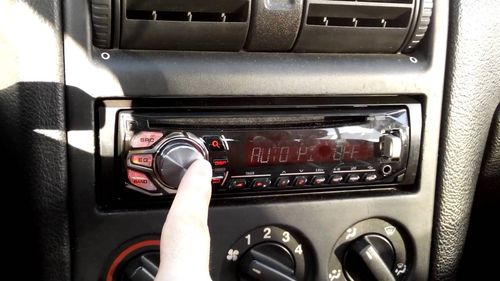

Radio Pioneer in the car
Chinese technology has fewer possibilities of this kind. The same budget Pioneer devices will be less protected from such troubles. Why is there such a dependence? This is typical not only for "white", but also for more expensive equipment.
Cold radiator
The other day I noticed that the coolant level in the tank is below the minimum. I poured it in. A few days later I decided to check in the garage (after pokatushek and appropriate warming up). Found that ext. the tank is cold. I touched the radiator - also cold. The branch pipe that goes up from the thermostat is hot, and the pipe that goes down is cold. The fans before the engine shut off worked like propellers. And after a while (after drowning it out) the radiator began to slowly warm from the edges to the center. What do you think? Thermostat? It's just that this warming confused me. Or is it normal at T = -15C? If the thermostat - then from what will it fit or is it better to look for the original? Than driving further (without fanaticism) is terrible? Pace. on the dashboard - normal, heats up quickly, the stove scalds.
the engine is overheating, the radiator is cold, (the fluid level is normal,)
Given: VW Jetta (1987), engine 1,3 the engine started to overheat.
Symptoms: the radiator is cold, the stove is barely warm, the liquid level in the expansion tank is normal.
Doubt: if the thermostat even froze in the small circuit position, why is the stove barely warm?
p.s. at first I thought that there was an airlock and for a very long time crushed all the available hoses.
user posted image
1) Pay attention to the pump 2) And of course to the thermostat
It seems that the pump simply does not drive the coolant along the contour.
and what are the symptoms of a pump breakdown? I seem to have a pump driven by a belt that goes to gas distribution, ribbed, if the pump was jammed, in theory I would not start the engine at all?
I forgot to write, it seems like the bottom pipe is cold, and the top one is hot.
user posted image
those. replace with a new thermostat? or buy for disassembly? maybe take it off altogether for the summer, let it warm up longer, but won't let you down in traffic?
In the Medvedkov district there are shops or analyzes, where can you look? What is the price level? Thank you.
regarding starting and driving - at 2108, the pump was most likely driven by a generator belt and it probably slipped, which does not particularly affect the operation of the engine, except that the charge is less and whistles.
VW has a different calico - there the pump on the 1.3 engine is driven not by a generator belt, but by a valve belt, which is doubtful. After all, when the pump is closed - does it go crazy? And the timing belt with links, it cannot slip?
Regular
Lyokha - BARN
just Lyokha.
Sev, eprst, you are making fun of the engine. the thermostat costs 300-600r. You can change it yourself if necessary. Mind you, the ABU motor is small and not as hardy as 2E for example.
most likely, the impeller on the pump either spun, or the blades on it are frayed - you need to remove the pump if you love it!
Change the thermostat to a heap, but if there were no such problems before, then you can leave it alone for now. the pump does not make noise.
constantin
Permanent participant
Lyokha - BARN
just Lyokha.
Is the pump repairable or just replacement?
and what is the sequence - first remove, then buy, or can you immediately run to the store? And which one to buy - exactly for the 1,1-1,3 motor or are they the same?

